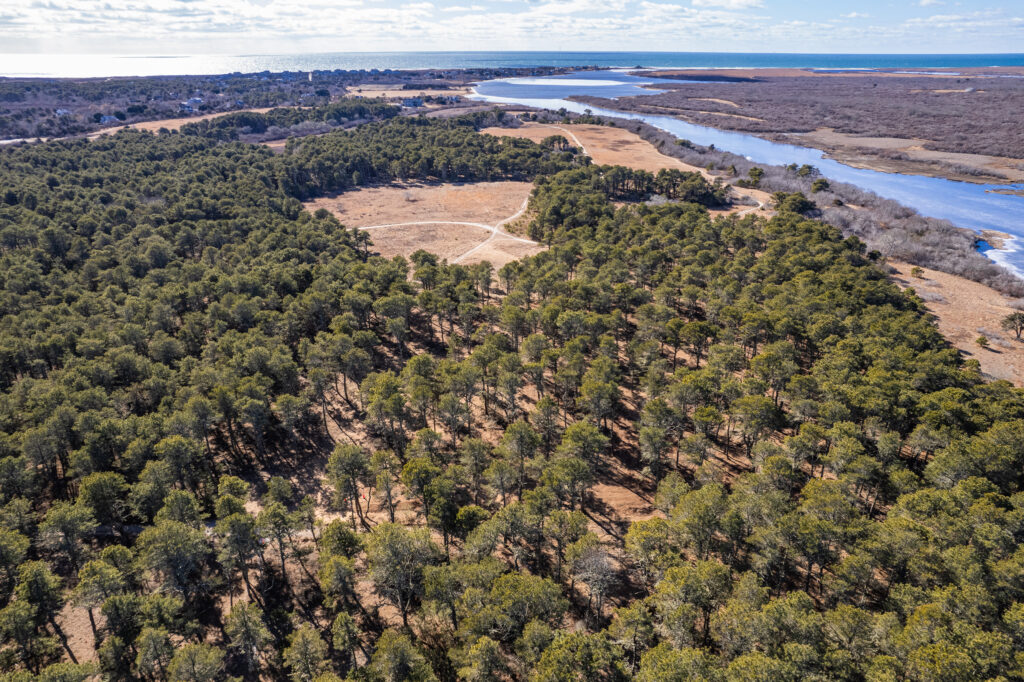Picture this: you are standing in a crowded room, barely able to move, surrounded by debris at your feet. If the person next to you sneezes, there’s no escaping their germs. Not exactly the image you would file under, “places I’d thrive,” right? Well, for trees, an overmature forest can feel a lot like that cramped room, it’s overcrowded, stressful and suffocating.
Gardner Farm, a 112-acre property which runs along the southeastern side of Hummock Pond, is a prime example of an overmature forest. This property was once actively farmed for much of the 1800s and 1900s before being left to naturally regenerate. Today, Gardner Farm has winding trails that lead you through grassy fields, over wetlands, and eventually through overgrown pitch pine and scrub oak forests. These pitch pines were reintroduced to the island in 1847 when farmer Josiah Sturgis planted seedlings along Milestone Road to serve as a windbreak. The seedlings not only survived but thrived in Nantucket’s low-nutrient sandy soil, constant salt spray, and low moisture conditions.
But here’s the catch, over the years, many pine barrens, including the ones at Gardner Farm, have become a little too “crowded”. Without much management and the decline in agriculture, the trees are packed in tight, competing for sunlight, water, and nutrients. Intense tree competition is less than optimal for the pitch pine. And while they are surviving, without intervention from our forest management team, they won’t get the space and sunlight they need to truly flourish.
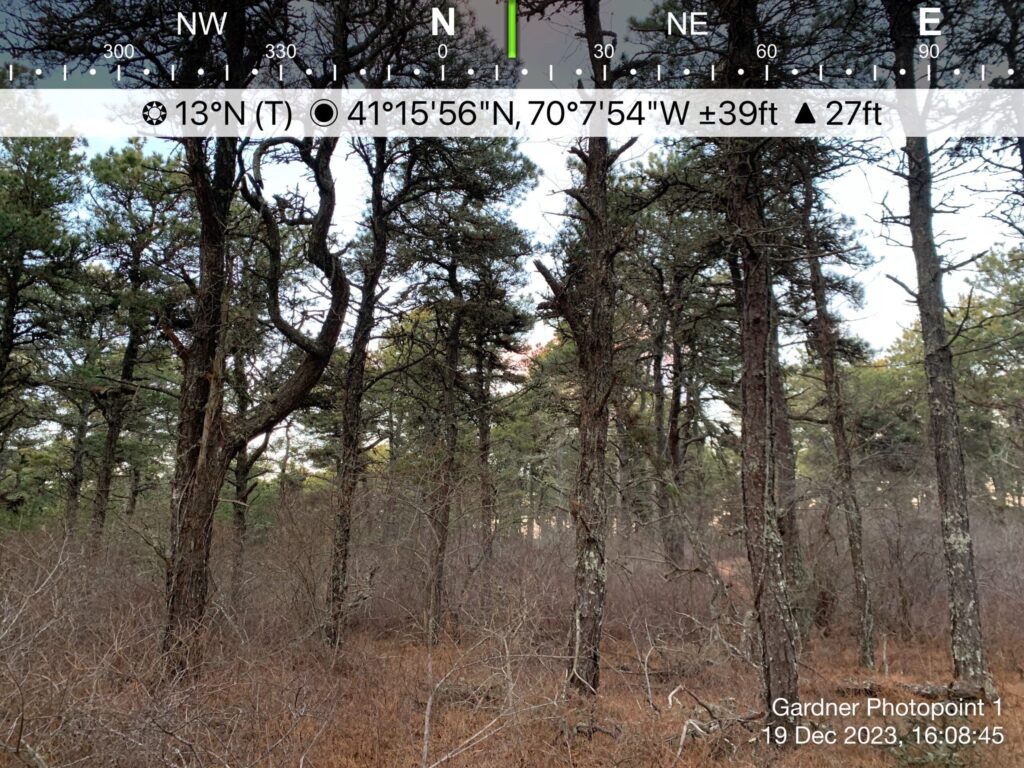
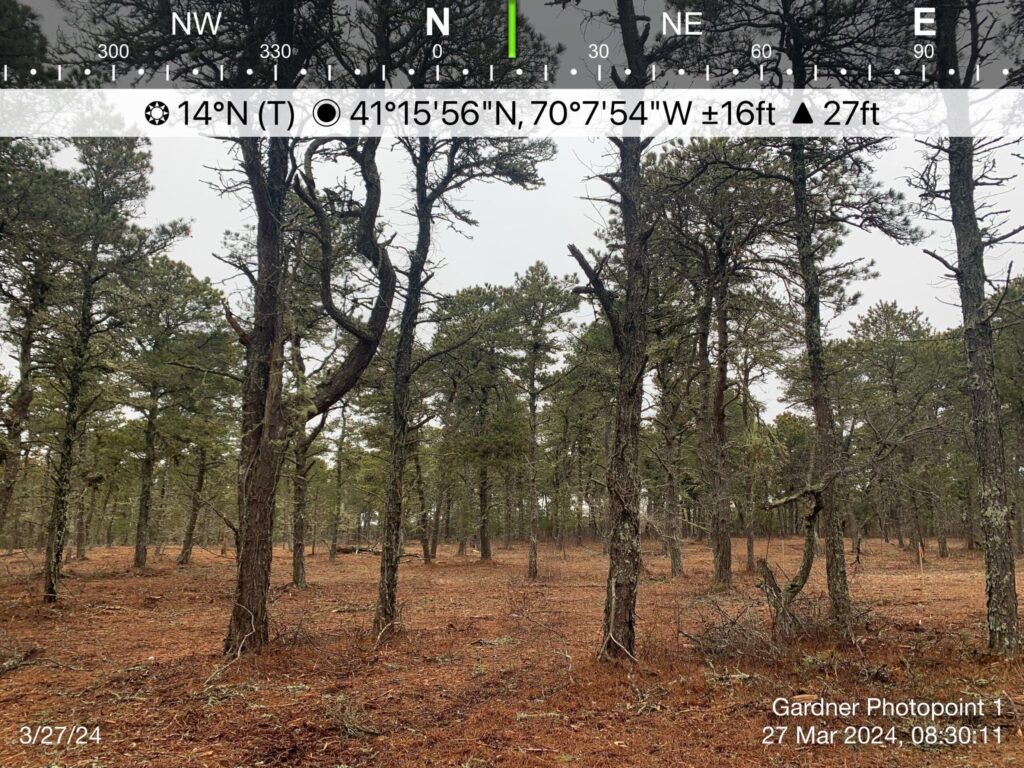
Gardner Farm before and after forest management work
One of the most significant issues in overmature pine forests is the thick layer of old needles and downed branches that carpet the forest floor. This buildup stifles new growth, reducing the number of understory plants that host rare insects and birds. This dry debris provides a fuel source for wildfires. What we mostly see on the news is a running crown fire, a fire that jumps from tree to tree in the canopy, which is a considerable threat to overcrowded forests. But one of the major contributors to crown fires are ladder fuels, which begin on the ground and consist of live or dead vegetation that ignites easily and facilitates fire moving up a tree, enabling the fire to spread from the forest floor to the canopy. Responsibly managing dry debris and ladder fuels can be the difference between a containable ground fire, and a crown fire that can quickly consume hundreds of acres.
In 2023, Nantucket experienced its first confirmed Southern Pine Beetle infestation. Historically confined to areas below the New Jersey state line, these beetles have been expanding their range north into New York and the New England area due to warmer winters associated with climate change. Considered one of the most destructive forest pests in the United States, southern pine beetles, which are smaller than a grain of rice, can decimate a forest if left unchecked. What are their target trees? Weakened or stressed pines, especially those weakened by drought, disease, old age, and, you guessed it, tree competition.
Recognizing these risks, the Land Bank field crew works diligently to mitigate threats. Beginning in 2024, they performed understory thinning and began clearing debris to diminish tree stress and allow more sunlight and airflow within the forest, which promotes healthier trees, regeneration, and new plant growth in the understory. These actions create a more resilient forest and improve habitats for insects and animals that call this forest home.
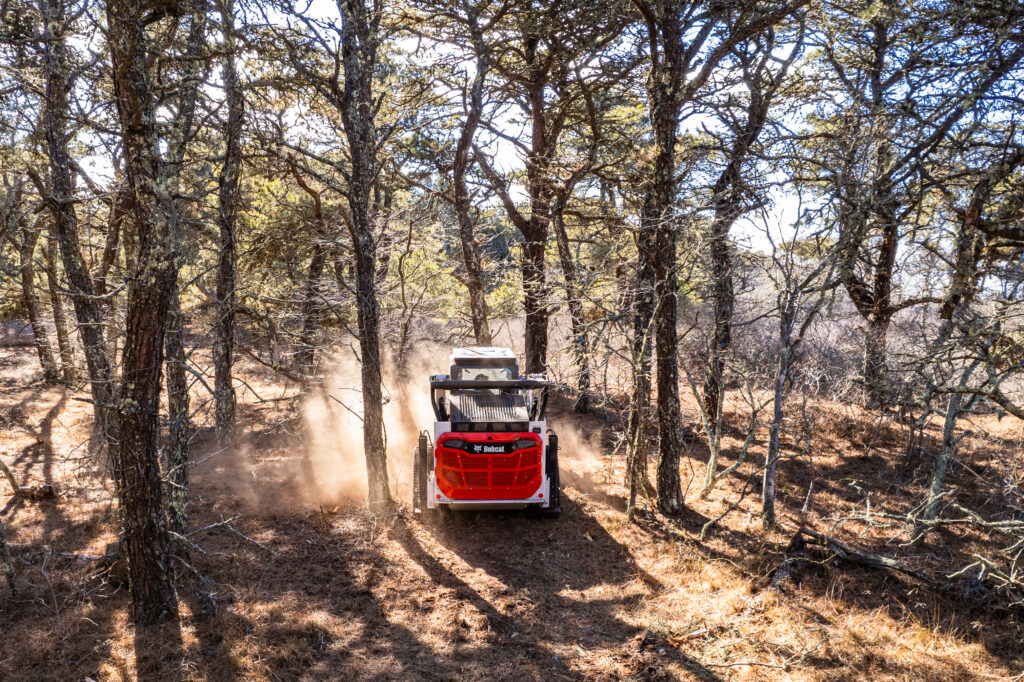
Though there is still much work to be done, we, along with our forests, can heave a collective sigh of relief. The early outcomes of our active forest management initiatives are promising, motivating us to continue this critical work. This past February, the Healy-Driscoll administration granted the Land Bank $75,000 to continue our efforts to restore the pine barrens at Gardner Farm in 2025.
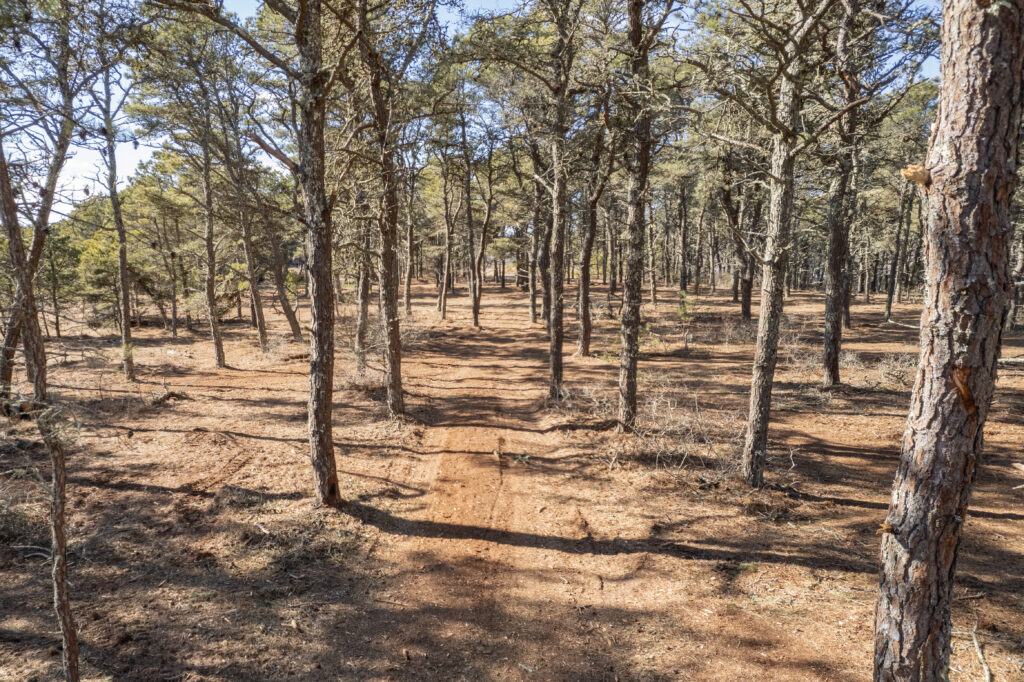
The next time you meander through Gardner Farm and come upon the forest, take note of the healthy pitch pine and the lush understory that has started to flourish. It may be difficult to recall how it used to look, but once you visualize that crowded room, you may see it in a different light and appreciate what it has become.

